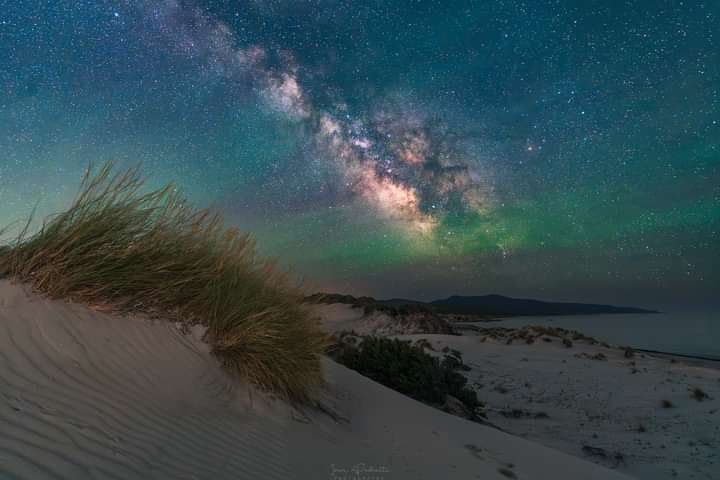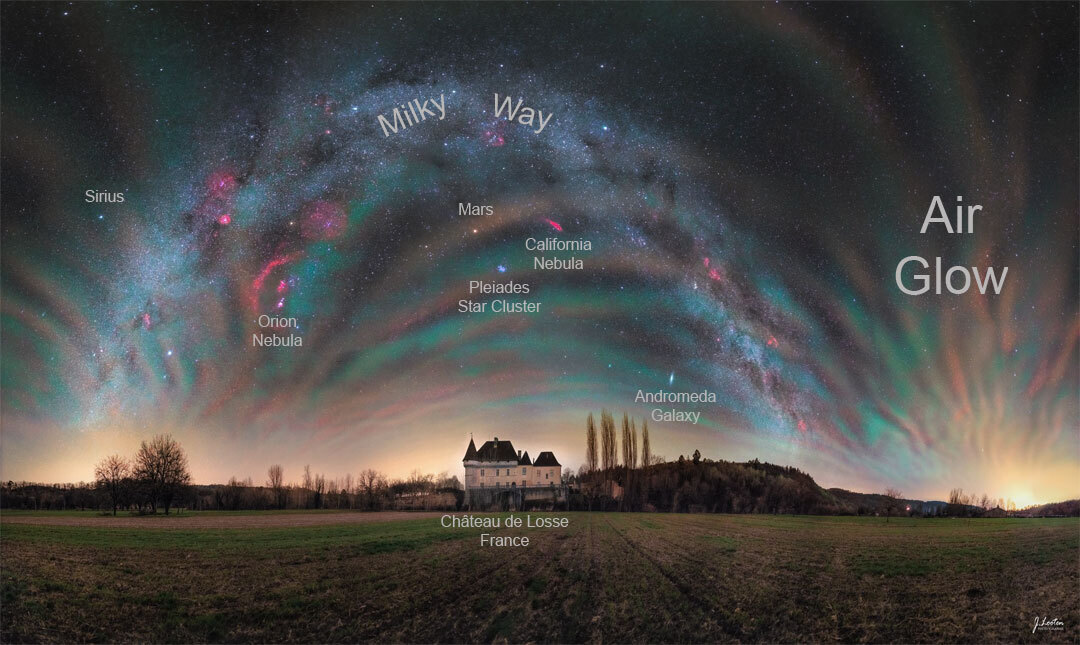#airglow
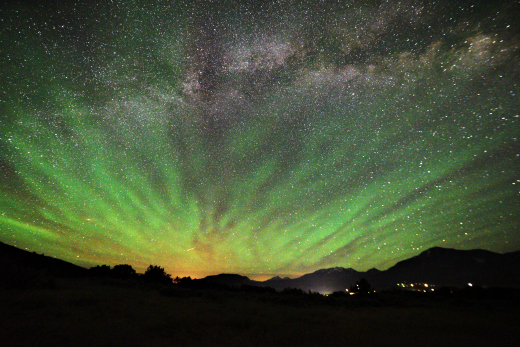
#GREEN #AIRGLOW: There was no geomagnetic storm on June 22nd. Nevertheless, the sky turned green over rural Colorado. Aaron Watson photographed the display from the West Elk Mountains:
"I woke up around midnight to crystal clear skies," says Watson. "I noticed some wispy rays and thought maybe it was noctilucent clouds, but upon closer inspection it was intense green airglow rippling across the entire sky."
The ripples look like auroras, but they are not. Airglow is a completely different #phenomenon. It gets started during the day when #sunlight #ionizes# atoms in #Earth's upper #atmosphere. At night, the atoms recombine, giving off light as they make themselves whole again. The green light Watson saw comes from oxygen atoms recombining 90 to 100 km above Earth's surface.
Although these are not auroras, they might still be linked to solar activity. In the 1930s, Lord Rayleigh realized that airglow peaks during years around Solar Maximum. Modern studies in, e.g., 2011 and 2022, have confirmed the effect. Airglow is brightest when the sun is most active. The reason why is not fully understood, but it probably has to do with the sun's increased output of ionizing ultraviolet radiation. More photoionization during the day produces more recombination at night.
That means now is the time to look for airglow. Solar Cycle 25 is intensifying with Maximum perhaps less than a year away. Get away from city lights, wait for the Moon to set, and point your camera at the midnight sky. It might not be as dark as you think.
https://spaceweather.com/
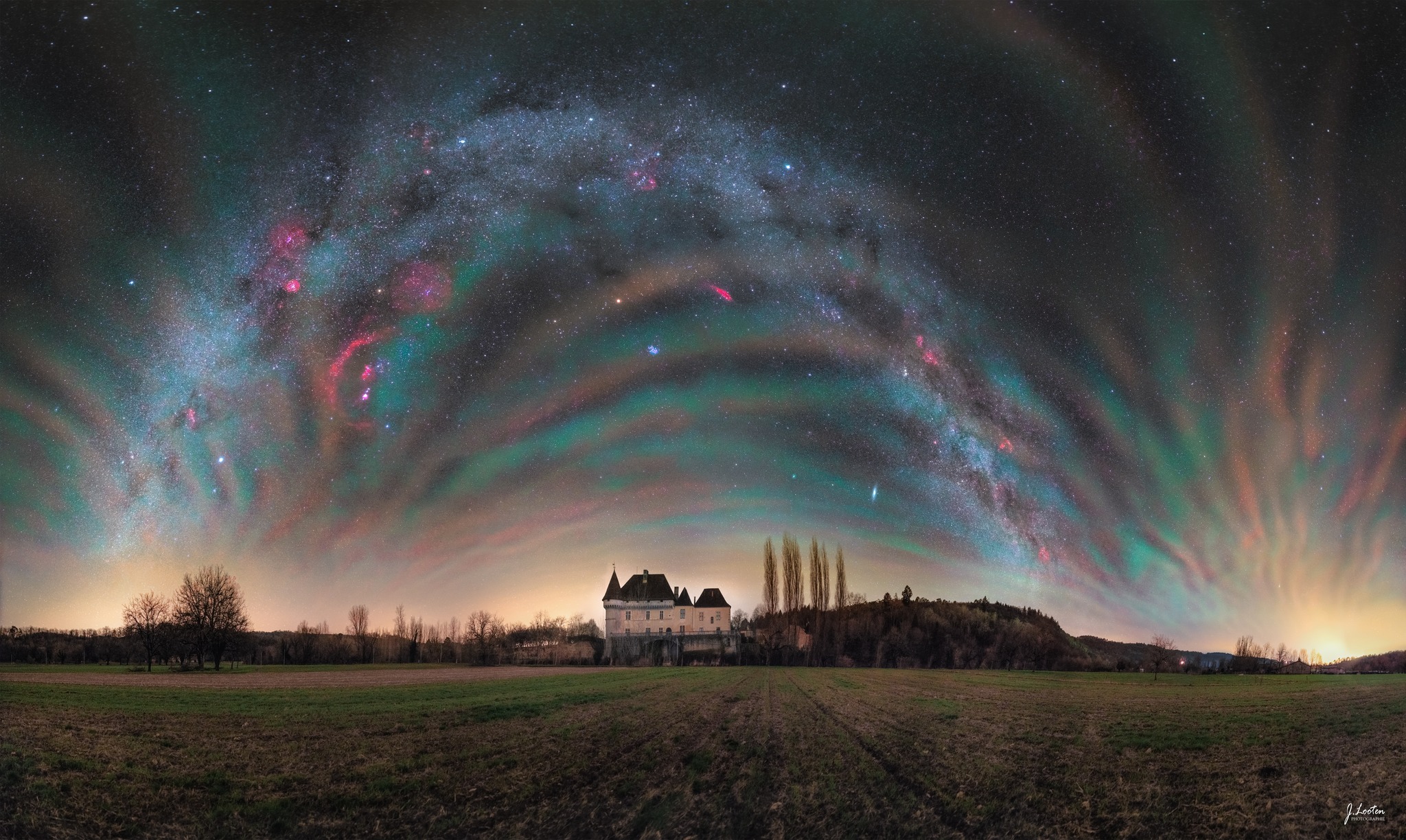
#Airglow Sky Over #France by #JulienLooten

This unusual sky was both familiar and unfamiliar. The photographer's mission was to capture the arch of the familiar central band of our #MilkyWay #Galaxy over a picturesque medieval manor. The surprise was that on this January evening, the foreground sky was found glowing in a beautiful but unfamiliar manner. The striped bands are called airglow and they result from air high in Earth's atmosphere being excited by the Sun's light and emitting a faint light of its own. The bands cross the entire sky -- their curved appearance is due to the extremely wide angle of the camera lens. In the foreground lies Château de Losse in southwest France. Other familiar sky delights dot the distant background including the bright white #star #Sirius, the orange planet Mars, the blue #Pleiades star cluster, the red California Nebula, and, on the far right, the extended #Andromeda Galaxy. The initial mission was also successful: across the top of the frame is the arching band of our Milky Way.
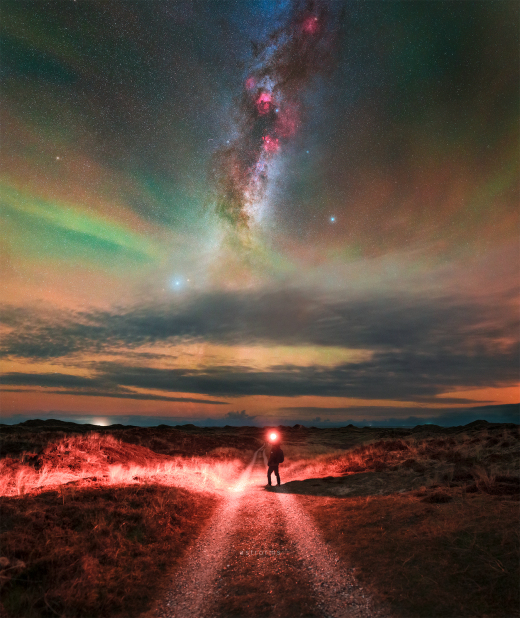
AURORAS ARE NOT AURORAS: Two nights ago astrophotographer Ruslan Merzlyakov went to the coastal wilderness of Denmark's Thy National Park and set up his camera for a long exposure of the Milky Way. He found the galaxy surrounded by aurora-like bands of red and green:
"It wasn't the aurora borealis," says Merzlyakov. "This was a magnificent display of airglow."
#Airglow is aurora-like #phenomenon caused by #chemical #reactions in the #upper #atmosphere. It gets started during the day when the air is illuminated by #ultraviolet #radiation from the #sun. At night the delicate afterglow can be seen from dark-sky locations like Thy National Park.
Green airglow is caused by oxygen. Red airglow is more rare; it is caused by OH. These neutral molecules (not to be confused with the OH- ion found in aqueous solutions) exist in a thin layer 85 km high where gravity waves impress the red glow with a dramatic rippling structure.
Who needs auroras? "The airglow," says Merzlyakov, "was out of this world."
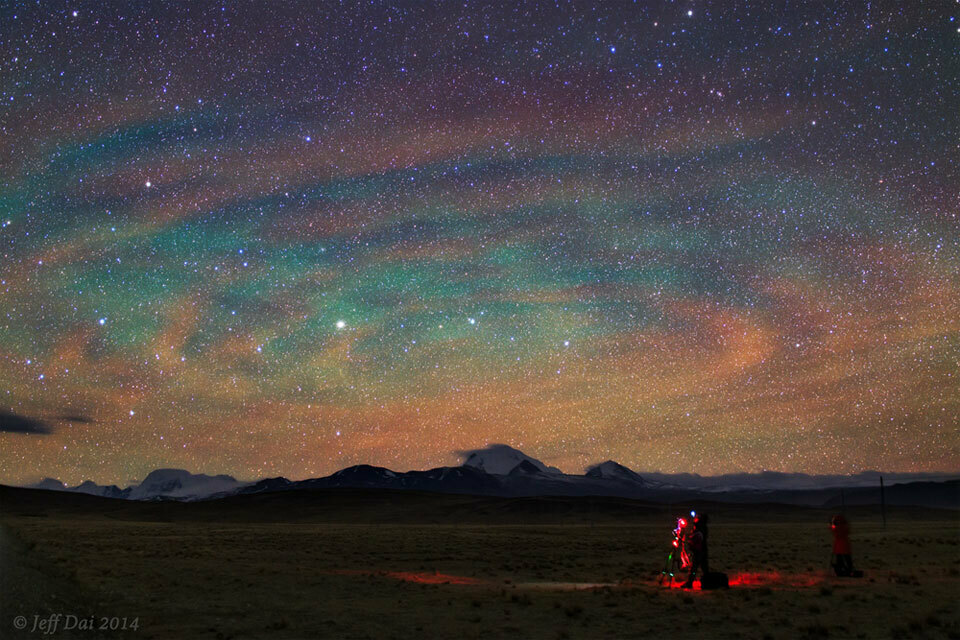
#Airglow #Ripples over #Tibet
#Astronomy #Picture of the Day

